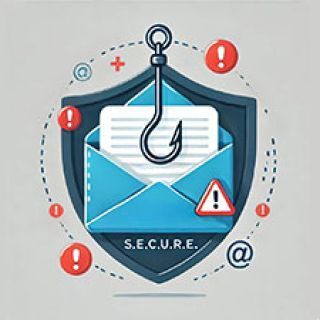If you're serious about growing a successful, profitable business in 2024 and beyond, there's no room for pass-the-buck tactics - especially when it comes to IT support. The efficiency of your IT team isn't just a convenience - it's a cornerstone of your operational capability. Yet many companies find themselves held back by subpar tech support, with unresolved IT issues lingering, impeding productivity and frustrating employees and customers alike. These recurring issues can significantly slow down your business growth and quickly cut into your profitability.
The reality is that reliable IT support is the backbone of modern business. It ensures operations run smoothly, data remains secure and communication channels remain open. Without it, even the simplest tasks can become complicated, leaving employees to deal with the fallout of unresolved technical problems instead of focusing on their core responsibilities. This can lead to missed opportunities, strained customer relationships and, ultimately, stifling your business's potential to expand and thrive.
In this article, we will share the common tech issues that are likely happening in your business right under your nose, how they are impacting your business's growth and what actions you need to take to eliminate them once and for all. Whether you're dealing with frequent downtime, delayed issue resolution or lackluster service, recognizing and addressing these IT shortcomings is essential for enabling your business to flourish.
Top Signs You Are Settling For Subpar IT Service
Recognizing the signs of inadequate tech support is the first step to getting back on track. These symptoms often manifest slowly and subtly but can have profound implications for your operations and growth over time. Here are the most common indicators that your IT support may not be up to par:
Frequent, Frustrating Downtime
Downtime is not just an inconvenience; it costs your business money. If your systems are frequently offline or your network experiences regular interruptions, it's a clear sign that your IT support is failing to maintain a stable infrastructure. This not only affects your team's immediate productivity but also impacts your ability to generate revenue and your reputation with clients, who expect reliability and professionalism.
Slow Response Times
When tech issues arise, response time can be just as critical as the solution itself. Prolonged response times can lead to extended disruptions in your workflow. Effective tech support should offer timely responses and quick resolutions to minimize downtime and keep your business moving forward.
Recurring Problems
Are the same issues cropping up repeatedly? This is a telltale sign of tech support that treats symptoms rather than underlying causes. Quality IT support digs deeper to find permanent solutions, ensuring that once a problem is resolved, it doesn't return to haunt your business operations.
Lack Of Proactive Measures
Preventive measures are the hallmark of excellent tech support. If your IT service is only reactive - responding to problems after they occur rather than anticipating and mitigating risks beforehand - your business is always operating a step behind. Proactive IT support includes regular updates, backups and security protocols that help prevent issues before they impact your business.
Poor Or Nonexistent Communication
Effective communication is vital in any relationship, including with your IT support provider. If explanations are unclear, tech jargon is used without clear explanations or calls and e-mails go unanswered, it indicates a lack of commitment to client service and can leave you feeling out of the loop and frustrated.
How Bad IT Support Is Affecting Your Business Right Now
Inadequate tech support does more than just create temporary disruptions; it can have lasting effects on your business's growth trajectory. Here are a few ways poor IT support directly impacts key areas of your business:
Downtime Leads To Lost Revenue
Every minute your systems are down, you're losing money. For small businesses especially, this can be devastating. Unplanned downtime not only results in lost sales but can also incur additional costs as you scramble to get systems back online. Over time, these losses can accumulate, significantly impacting the financial health of your organization.
Inefficiency Reduces Productivity
When employees are consistently facing IT issues, their ability to perform efficiently is compromised. Simple tasks become time-consuming, reducing overall productivity. This inefficiency not only slows down operations but also affects employee morale and job satisfaction, which are crucial for long-term business success.
Customer Experiences Suffer
Your technology directly impacts your customers, from how they interact with your services online to how you manage their data. Frequent tech issues can lead to poor customer experiences, such as slow service, transaction problems or security concerns. In today's market, customers are quick to switch to competitors if they feel their needs aren't being met effectively.
Hindered Scalability
As your business grows, your IT infrastructure needs to evolve to support increased demands. Poor tech support can hinder this scalability, making it difficult to expand operations or integrate new technologies. Without the ability to scale efficiently, your business could miss out on potential growth opportunities.
Compromised Data Security
One of the most severe impacts of inadequate tech support is compromised security. Small businesses are frequent targets for cyber-attacks, and without robust IT support to implement and maintain strong security measures, your business is at a higher risk of data breaches. These breaches can have catastrophic consequences, including loss of customer trust, legal repercussions and substantial financial losses.
How To Choose The Right IT Support For Your Small Business
Selecting the right IT provider is pivotal for ensuring your business's long-term success. Here are key attributes to look for in a reliable IT support provider:
- Responsiveness - Choose a provider known for quick response times. Efficient problem-solving can drastically reduce downtime, helping maintain continuous business operations.
- Expertise - Ensure the IT support team has the necessary technical expertise to manage your infrastructure. Look for certifications and experience in the specific technologies your business uses.
- Proactiveness - Select a provider that offers proactive support, such as regular system audits, continuous monitoring and preventive maintenance, to avoid issues before they arise.
- Communication - Effective communication is essential. Your IT support team should provide clear, jargon-free explanations and maintain open lines of communication.
- Customization - Opt for a service offering tailored solutions that align with your specific business needs, ensuring more effective and relevant support.
- Reviews And References - Check reviews and ask for references to gauge the provider's reputation and reliability. Positive feedback from other businesses can be a strong indicator of quality service.
If you're tired of dealing with recurring issues like downtime, slow response times, ineffective solutions or hearing your employees complain that something is "always broken," it's time to look for better IT support. Don't let poor tech support be the bottleneck that stifles your business's potential - take action today to ensure your technology propels your business forward.
Get a FREE 10-Minute Discovery Call with one of our experts by clicking here or calling us at (207) 300-2300.
Justin Donnaruma
June 26, 2024




